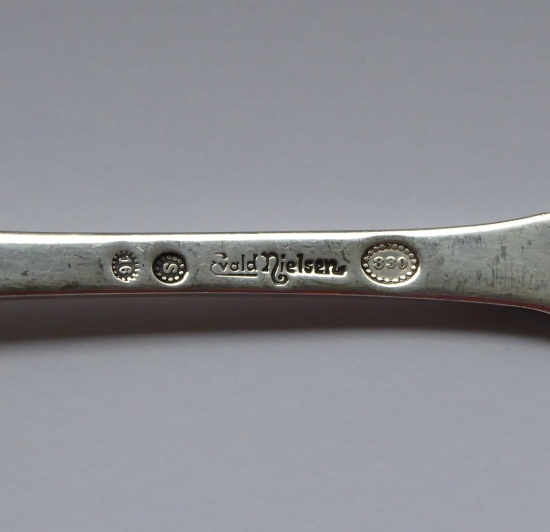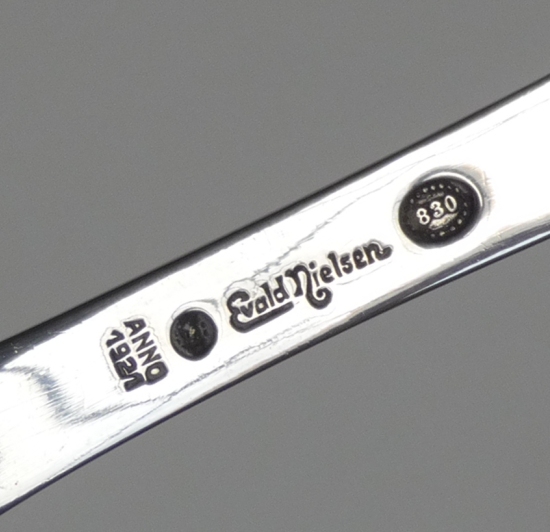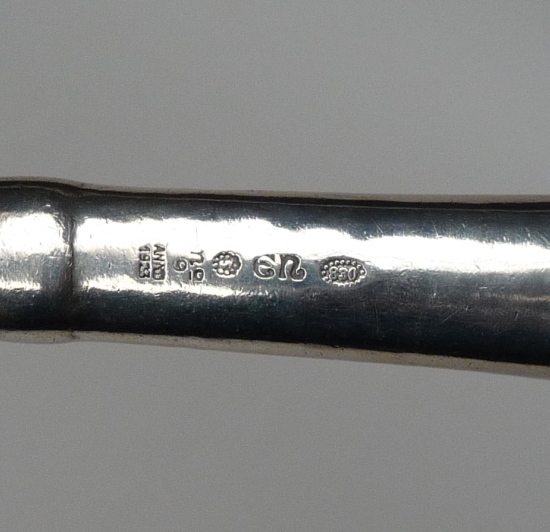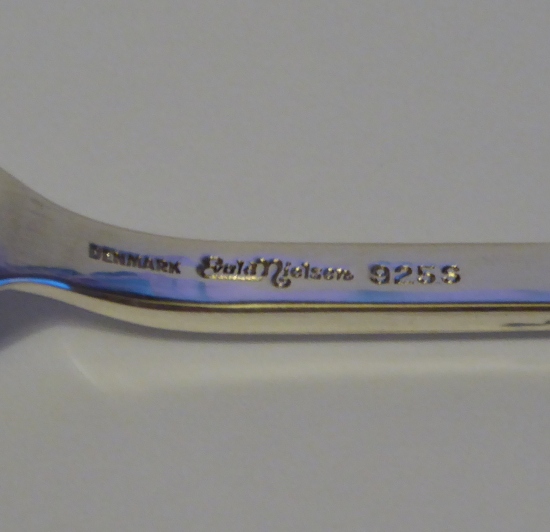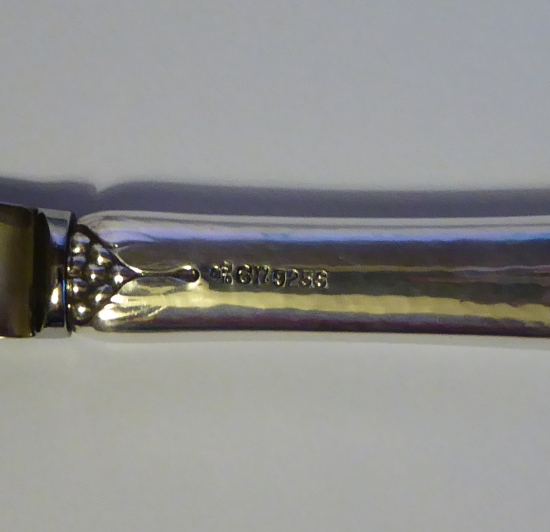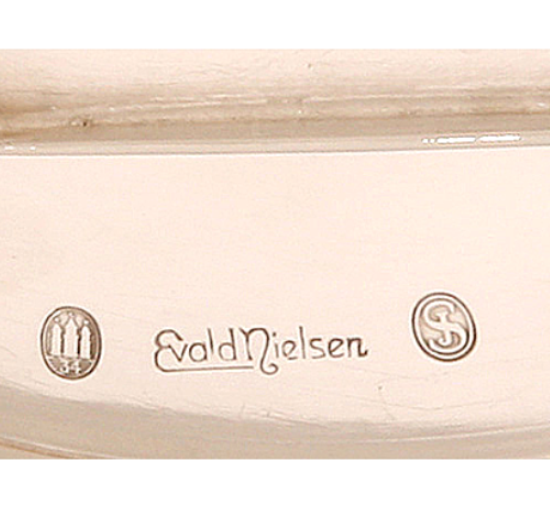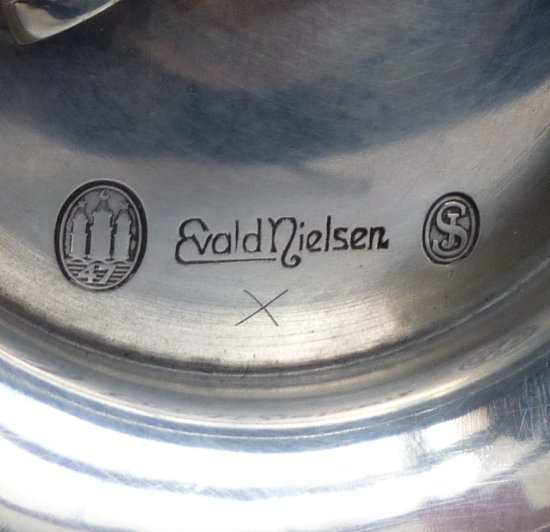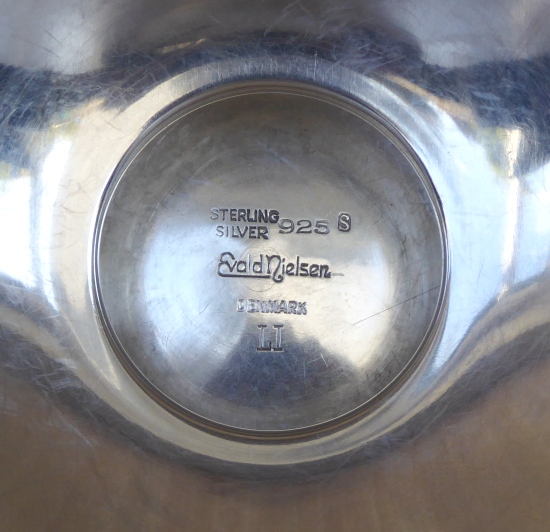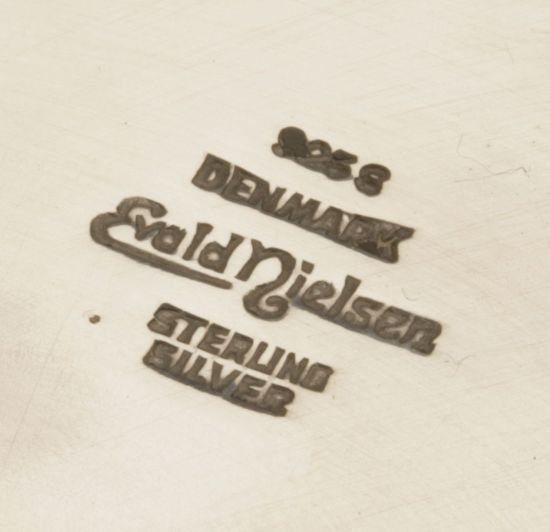Danish silverware has almost always been marked. Erik af Pommeren, King of Denmark in the period of 1396-1439, announced in a paper dated in 1429, that ”every goldsmith is obliged to process high-quality silver and fine gold”. In this paper the size of fines and punishments were also mentioned in case the silversmith or goldsmith did not follow the rules.
Makers mark was introduced in 1491 and most often it showed the initials of the maker or his full name. The mark was the makers guarantee that the silverware held it's quality. This kind of arrangement with markers mark has later on made identifying and valuation of silverware a lot easier because you could always be sure of where the silver had been produced.
Silversmith workshops with a large production as i.e. Evald Nielsen, Michelsen og Georg Jensen made (during the years 1900-1950) a deal with the statsguardein that not every piece of silverware had to be marked with the well-known "three towers". Instead the silver workshop was allowed to use the quality mark "830 S" or "925 S". To ensure that rules of quality were kept the Stastguardein visited the workshops on a regular basis and made spot tests - a way of working which is still being handheld today.
The mark of the statsguardein was most often a more or less creative motif made from his initials. This arrangement was established in 1679 and worked untill 1960 where the quality control was taken over by the government. If the silverware is marked with the "three towers" it should also carry the mark of the statsguardein because he was the holder of the "three towers" marking tool and therefore made the quality control himself.
News
Contact information
How to reach us
Phone: +45 44 94 65 10
e-mail:
We strive to answer all enquiries within 48 hours
Here we are

 Danish
Danish English
English German
German

